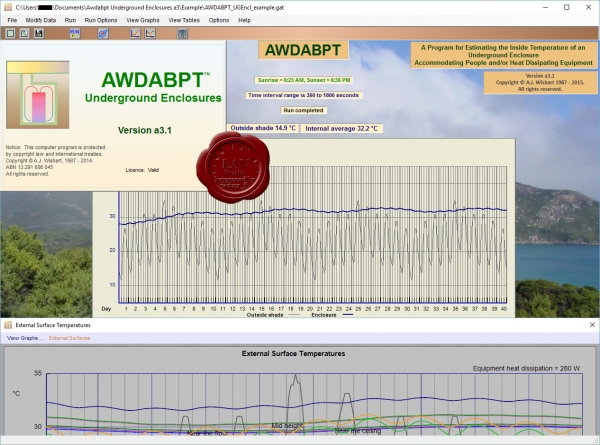
The program calculates the average enclosure (room) and entrance tower air temperatures under the given climatic and room thermal load conditions. A heat transfer analysis is performed dynamically over the required time period of up to a year (if you have the computer capability available). Finite difference numerical methods are used so that the thermal storage effect of the enclosure structure and the surrounding soil is properly modelled.
The ground thermal properties together with the long term average air temperatures at the enclosure's location are used to estimate ground temperatures over a twelve month period. Actual ground temperatures for a given day at given depths may also be used to help shape the ground temperature model. That is, you can adjust the soil thermal properties to gain a better fit of the temperature curves.
A proper solar radiation generator, based on the model for the equation of time and the solar declination, is used. The solar radiation received on a surface can be varied by selection of its solar absorptance (absorption factor), the turbidity factor (haze) of the air and the cloud cover. Re-radiation from external surfaces to the sky is also modelled.
Convection and radiation heat transfer coefficients are calculated during the running of the program at each time increment. The convection coefficients are determined depending on temperatures as well as whether still conditions apply or air movement due to wind (external surfaces) and fans (internal surfaces) occurs.
The average room air temperature is determined from a heat flow balance of heat source and sinks such as the equipment, the walls, roof and floor and consequently the surrounding soil, the room air itself, thermal stores in the room, heat exchangers (room air conditioners, chilled water storage fan-coil units, etc.) and outside air used for room ventilation or entering as infiltration.
The relevance of the predictions provided by AWDABPT-UG can be no better than the extent to which the user's input data correctly models the subject enclosure. Further, the accurate modelling of the outside weather conditions may not be fully achievable by this program due to the rapid changes which weather can undergo.